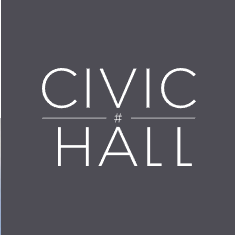Although it would come as news to a sizeable chunk of Canadians, they do not elect their head of government—at least not directly. Like some other nations that used to be British colonies, Canada is governed by the Westminster system, meaning the prime minister is appointed by the Queen’s local representative, the governor general. Normally, this official appoints the leader of the party that wins the most seats in the House of Commons, making the prime minister a democratically chosen leader in practice, if not on paper.
However, this democratic choice is arguably distorted by the first-past-the-post (FPTP) voting system, in which the candidate who gets the most votes in an electoral district wins a seat. FPTP is usually (though not always) consistent with the popular vote when there are two dominant parties, as in the United States, but because most Canadian ridings (electoral districts) now have three or more non-“fringe” candidates, somebody can easily win a seat without earning the majority of the votes, just so long as he or she still has more votes than each of the competitors.
As a result, Canada’s government is often elected by a minority of the citizens. The current prime minister’s party, the Conservatives, had 39.62 percent of the popular vote in the 2011 election. The geographical distribution of these votes also happened to give the Conservatives a “false majority”: they hold over half of the seats in the House of Commons despite having earned under half the vote—and are therefore able to pass legislation without support from any of the other parties.
Given the potential for this kind of scenario, it isn’t unusual for Canadians to cast a ballot, not for the candidate they like the most, but instead for the person they believe has the best chance of defeating the candidate they like the least.
Leading up to the Canadian election scheduled for October 19, web-based vote-swapping hubs are offering another tactical option. Instead of simply voting for second- or third-choice candidates, vote swappers aim to pair up with somebody who lives in a riding where their preferred party has a real chance of winning a seat according to poll data and statistical modeling. Each partner in the swap agrees to vote for the other partner’s preferred party.
Dr. Mai Yasue, a conservation scientist in Vancouver, thinks her priorities are most in line with those of the Green Party, but her riding is a close three-way race between the Conservatives, the Liberals and the New Democratic Party (NDP). “Although I’d like to show my support for the Green Party and help them gain a reputation of being a real Canadian political party, the idea of helping to give a seat to the Conservatives is abhorrent to me,” she says. She is looking to swap her vote with a Liberal Party supporter in a riding with a strong Green candidate.
Preserving the overall vote count of small parties like the Greens is one of the advantages of vote swapping. “It’s a way to get their leaders into the house, and these parties bring important conversations to the table,” says Craig Hubley, one of the administrators behind Vote Swap Canada 2015, a Facebook group where would-be swappers can post want ads to find a partner.
Another purported advantage of swapping is that once you’ve committed to vote on behalf of somebody else, your conscience is more likely to send you to booth on election day—even if you’re busy or tired. “It creates a feeling of solidarity between myself and the person I’m swapping with,” says Marena Brinkhurst, an NDP supporter voting in Nova Scotia who found a Liberal partner in Quebec through Vote Swap Canada 2015. “We’re in different provinces and we support different parties, but we’re both in the same bind and we can help each other. It’s a refreshing moment of connection and trust to find during an election.”
In addition, swapping offers the option of voting for a candidate whose track record or ideas you admire but who isn’t running where you live. “Maybe you can’t stand any of the people in your riding,” says Hubley. “But there must be someone, somewhere in the country, whom you can respect.”
PILOTED IN THE USA
Informal vote swapping between family and friends has probably existed for decades if not longer. Even before Canadians took to the web in 2008 to swap votes with strangers, a similar endeavor had been tried during the American presidential election in 2000, when Ralph Nader supporters in swing states agreed to vote for Al Gore in exchange for Nader votes in predictable states. One of the websites facilitating these arrangements, voteswap2000.com, was threatened with criminal prosecution by California’s secretary of state, frightening it (and others) into shutting down. Seven years later, it was vindicated by a circuit court’s decision that these threats had violated the website creator’s freedom of speech. Online vote swapping has continued playing a minor role in the United States ever since.
The Gore-Bush race was so close that Gore-Nader swaps held the potential to change the outcome, but since 2000, the margins of victory in presidential elections have been wider. In Canada, by contrast, it’s recently been the rule rather than the exception that a few thousand vote swaps could theoretically make the difference between a majority government (that can largely do as it pleases) and a minority one (that must cooperate to a certain extent with other parties)—and once you get into tens of thousands of swaps then you could even give the government to an entirely different party and prime minister.
The challenge is making these swaps in effective places. “Local riding polls are expensive,” says Hubley. “They’re mostly done by parties and kept secret.” In 2011, some of the publicly available riding projections were off, so that vote-swapping hubs’ recommendations were off, too. “That’s part of the reason why, in the end, there was no seat that we could point to and say, ‘That was us,’” Hubley says.
Former Green Party leader and author Jim Harris is trying to address this problem by crowd-funding polls in key swing ridings via voteswapping.ca. “Statistical modeling is something to go by, but it’s not as reliable as an actual poll,” he explains, adding that the results of any polls he manages to fund will be made available to everyone, not only to the people formally registered to swap votes on his site.
HOW IT WORKS
There are several different ways a website can facilitate vote swapping. It can be a forum for posting want ads, it can host a partner-matching app, or it can be a place to register for swaps that will be orchestrated by humans behind the scenes. Each method has been tried out at least once, and each has its pros and cons. Want ads offer no privacy, but they let you zero in on exactly the type of swap you’d like to make for whatever reason. Different swappers might have different strategies in mind, and they can all simultaneously pursue them in a free-for-all.
The other two methods allow, if desired, for a more coordinated strategy—and administrators will ideally be transparent about what that strategy is. Voteswapping.ca, for example, is explicitly an anti-Stephen Harper site: its foremost goal is to prevent him from staying on as prime minister. Harris says this initiative is aiming to “concentrate swaps in fewer ridings and make a difference, rather than spread them out where their effect would be diluted.” To this end, only people who live in ridings that are known to swing between the Conservatives and another party can get a partner through voteswapping.ca. Those who live in “safe” ridings are encouraged to participate by spreading the word.
In the Canadian context, vote swappers tend to be anti-Conservative because the other four seat-holding parties—despite their differences—are all left-leaning by comparison. So far, formal swappers also tend to be people who are more politically engaged than the average citizen, according to Hubley, although most of them would of course like to see swapping take off as a mainstream practice.
Neither Harris nor Hubley are game for predicting how many people will take part this year. In previous elections, the numbers have been modest but not so small that a real impact has been out of the question. In 2011, around 78,000 visitors perused votepair.ca, the largest vote-swapping hub at the time, and over 7,500 of them formally signed up. (As a point of comparison, the Conservatives won a majority government in that election by 6,201 votes.) There’s also evidence that discussing swapping—or hearing that it’s going on—motivates more people to vote tactically, with or without a swapping partner.
The leader of the Green Party of Canada, Elizabeth May, might partially owe the seat she won in 2011 to this effect, Hubley says. The Green supporters trying to find a swap in her riding outnumbered the potential partners who had signed up there, and canvassers mentioned this when they were going door to door. Although they garnered only around 120 formal swaps this way, May defeated the Conservative incumbent by a landslide, against expectations. “A lot of people there in Saanich-Gulf Islands might have said to themselves, ‘Why should I vote in a narrow, partisan way when all these Greens are willing to look at the big picture and make a compromise? And why should a party with nearly a million supporters not have a single seat?’” says Hubley. “Maybe it tapped into a primate fairness/reciprocity instinct.”
PRESSURE-RELEASE VALVE OR PUSH TOWARDS PROPORTIONAL REPRESENTATION?
Elections Canada, the agency responsible for running federal elections, has weighed in on vote swapping only once, back in 2008. They said there is no law against it so long as no money is exchanged, but they also warned of the danger that your partner will not keep his or her promise to vote for your party of choice. Since it’s illegal to follow anyone into a voting booth and watch what they do, swapping must rely on an unverifiable handshake.
There would be less reason for vote swapping—and for assuming its risks—if elections were based at least in part on proportional representation (PR). Canadian citizens’ groups are advocating for this on Twitter under the hashtag #PR2015, and much of the chatter in vote-swapping web forums is about the kind of electoral reform that would make the practice obsolete.
Harris believes that vote swapping will accelerate the drive for reform, because parties and candidates would rather win or lose straightforwardly than have their fates decided by voter dealing. Also, the practice’s very existence—regardless of participation numbers—attracts media attention and highlights certain absurdities in the first-past-the-post system.
There’s reason to believe that adding an element of proportional representation to the voting system is not just a pipedream. The Canadian constitution does not stand in the way, the New Democratic Party has committed to it and Liberal leader Justin Trudeau has made it part of his election platform. Both the New Democrats and the Liberals currently have as good a chance of forming the next government as any party does.
Deciding exactly what types of reforms would best suit the country is another kettle of fish, and for his part, Hubley says he would rather stick with FPTP—with vote swapping as a “pressure release valve” for voter frustrations—than end up with any of his least favorite of the possible forms of proportional representation.
Whether from active campaigns by groups like Fair Vote Canada or merely from personal experience, plenty of Canadians are aware that many votes count for nothing under FPTP. Voter turnout in 2011 was 61.1 percent, 2008 saw a record-low 58.8 percent, and “the current system breeds apathy,” argues Yasue. If nothing else, vote swapping is reinvigorating some citizens’ interest in elections by offering them a greater say. “People who were feeling helpless have told me they’ve stopped feeling that way,” says Hubley. “The psychology of the swap is empowering.”
Samantha Rideout is a freelance writer and editor in Montreal.




